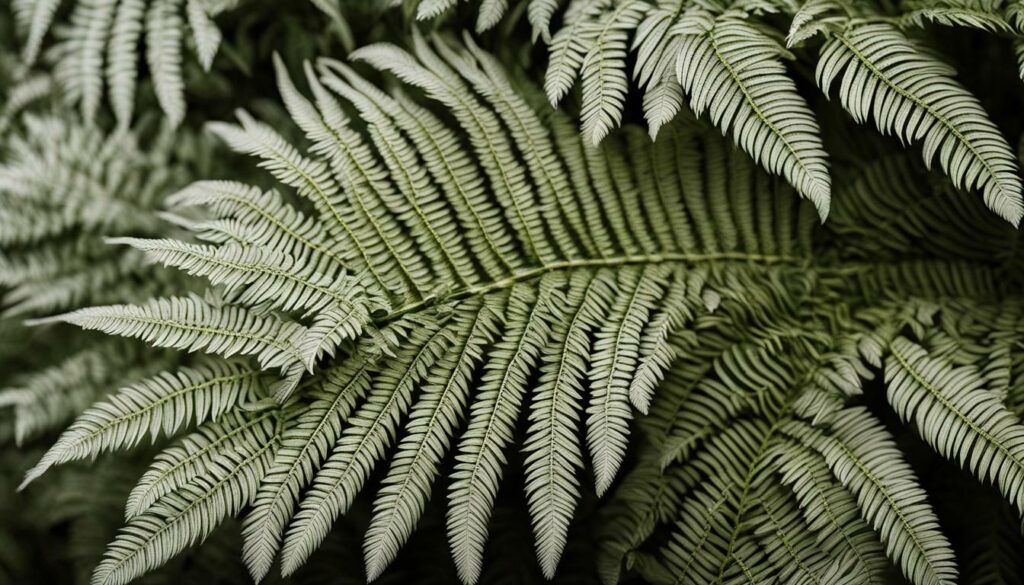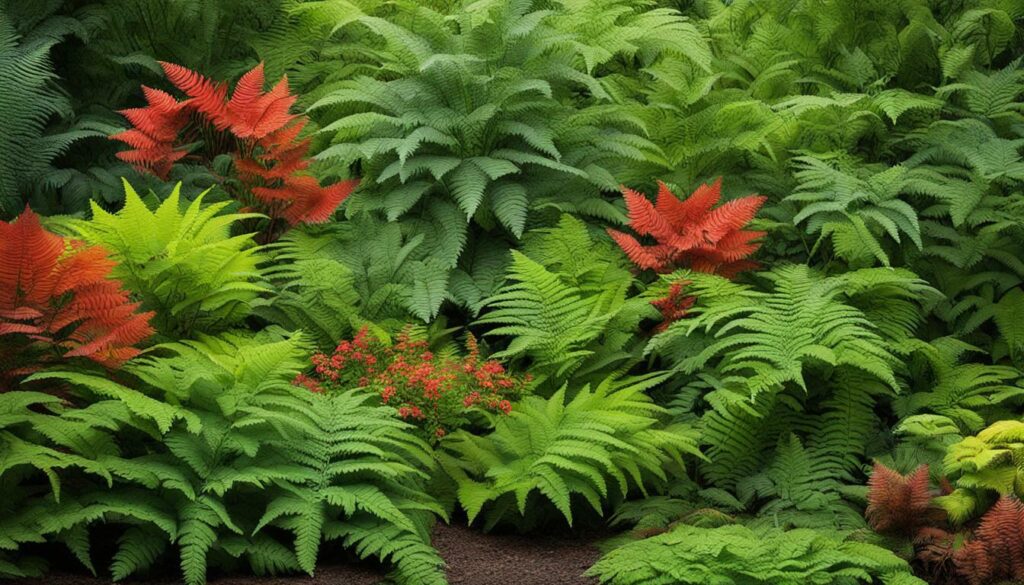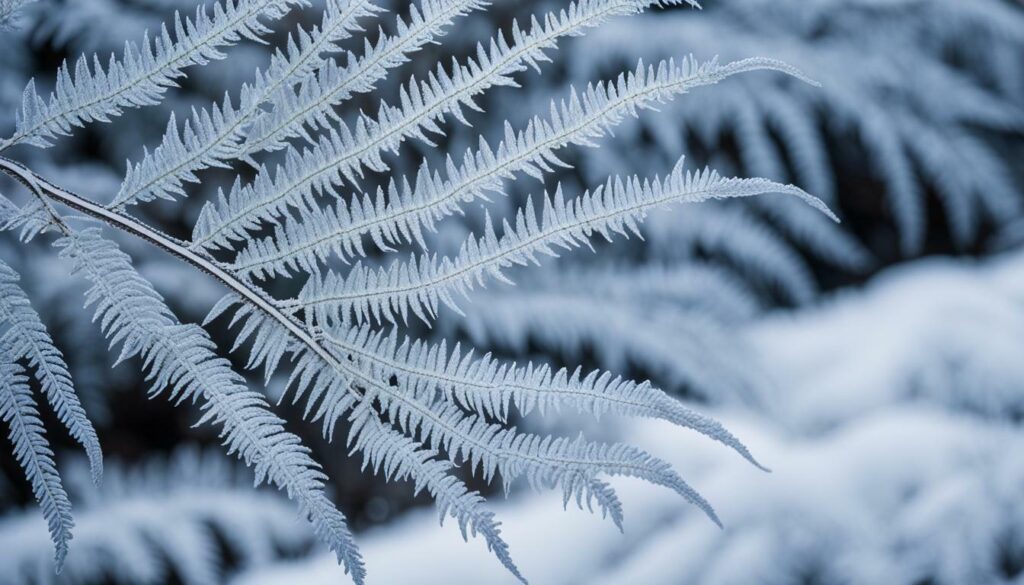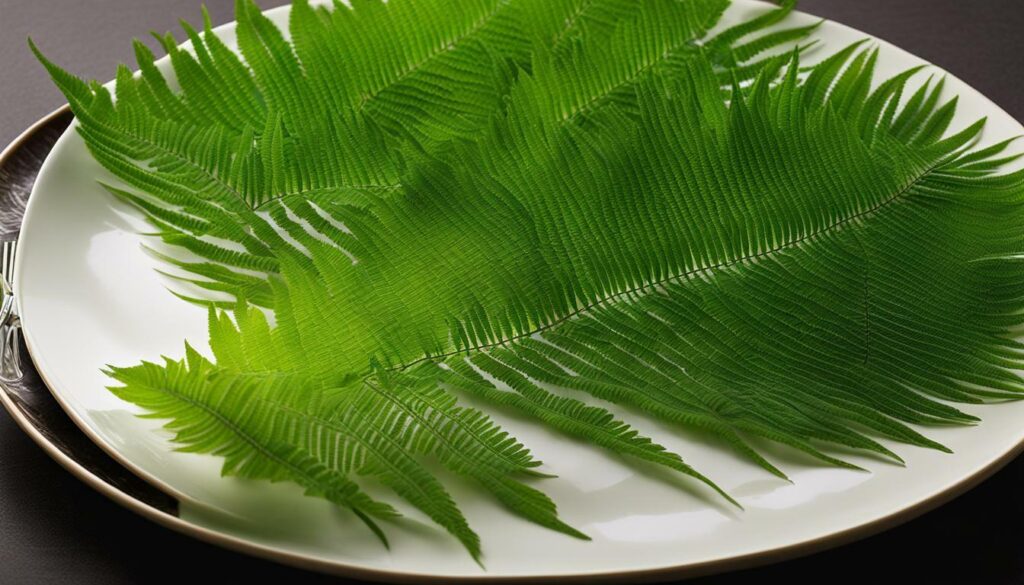Welcome to the captivating world of Dicksonia antarctica (Soft Tree Fern), a stunning native Australian plant.
Dicksonia antarctica, also known as the soft tree fern or man fern, is an evergreen tree fern native to eastern Australia and Tasmania. It can reach heights of up to 15 meters (49 feet), but typically grows to about 4.5-5 meters (15-16 feet). The fern consists of an erect rhizome forming a trunk covered in hairy stipe and crown. The dark green fronds can spread to a diameter of 2-6 meters (6 feet 7 inches – 19 feet 8 inches). The trunk is usually solitary, without runners, but may produce offsets. Reproduction primarily occurs through spores, but plantlets can also occur around the base of the rhizome.
Dicksonia antarctica grows in damp, sheltered woodland slopes, moist gullies, and occasionally at high altitudes in cloud forests. It is the most abundant tree fern in southeastern Australia. The fern is adaptable to various soil types and can grow in semi-shade. It requires regular watering and prefers moist soil. In cultivation, it is often used for garden planting and landscaping purposes. The trunk can provide habitat for epiphytic plants, and the fern itself provides shelter for other fern species.
Dicksonia antarctica is hardy to about -5°C (23°F) and can tolerate light frost. The soft tree fern is also edible, with the pith of the plant being eaten either cooked or raw. It is a good source of starch.
Table of Contents
ToggleKey Takeaways:
- Dicksonia antarctica is a native Australian plant and is also known as the Soft Tree Fern.
- It is an evergreen tree fern with a solitary trunk covered in dark green fronds.
- The fern thrives in damp, sheltered woodland slopes and moist gullies.
- It is a popular choice for garden planting and landscaping due to its adaptability.
- Dicksonia antarctica is hardy to -5°C (23°F) and can tolerate light frost.
Overview of Dicksonia antarctica
Dicksonia antarctica, also known as the Soft Tree Fern, belongs to the tree fern family and boasts beautiful, evergreen foliage. This native Australian plant is characterized by its lush fronds, which add a touch of elegance to any garden or landscape.
Standing tall at heights of up to 15 meters (49 feet), the Soft Tree Fern features an erect rhizome that forms a trunk covered in hairy stipe and crown. Its dark green fronds can spread to a diameter of 2-6 meters (6 feet 7 inches – 19 feet 8 inches), creating a stunning display of vibrant foliage.
| Common Name | Scientific Name | Native to |
|---|---|---|
| Soft Tree Fern | Dicksonia antarctica | Australia and Tasmania |
Dicksonia antarctica thrives in damp, sheltered woodland slopes, moist gullies, and occasionally in cloud forests at higher altitudes. It is the most abundant tree fern species in southeastern Australia.
Growth and Appearance
The Soft Tree Fern’s growth is characterized by an erect trunk that can reach a height of 4.5-5 meters (15-16 feet). The trunk is usually solitary, without runners, but may produce offsets. Reproduction primarily occurs through spores, with plantlets occasionally appearing around the base of the rhizome.
“The Soft Tree Fern’s dark green fronds create a stunning display of vibrant foliage.”
In cultivation, Dicksonia antarctica is highly versatile and can adapt to various soil types. It thrives in semi-shaded areas and requires regular watering to maintain its lush appearance. This makes it a popular choice for garden planting and landscaping projects.

The Soft Tree Fern also plays an important ecological role, providing habitat and shelter for other fern species. Its hardiness to temperatures as low as -5°C (23°F) and its ability to tolerate light frost make it suitable for a range of climates. Additionally, the fern is not only admired for its beauty but also for its edible qualities. The pith of Dicksonia antarctica can be consumed either cooked or raw and is a valuable source of starch.
| Cold Tolerance | Frost Resistance |
|---|---|
| -5°C (23°F) | Light Frost |
In summary, Dicksonia antarctica, also known as the Soft Tree Fern, is a remarkable native Australian plant. Its tree fern classification, evergreen nature, and lush foliage make it a stunning addition to any garden. Whether used for landscaping or as a shelter for other fern species, this versatile plant brings beauty and ecological importance to outdoor spaces.
Growth and Appearance
Dicksonia antarctica can reach impressive heights, with its trunk covered in hairy stipe and crown, adorned by dark green fronds. This magnificent fern species can grow up to 15 meters (49 feet), although it typically reaches heights of about 4.5-5 meters (15-16 feet). The fronds of Dicksonia antarctica can spread to a diameter of 2-6 meters (6 feet 7 inches – 19 feet 8 inches), creating a lush and vibrant display in any garden or landscape.
The fern’s trunk is usually solitary, without runners, but it may produce offsets. The trunk, covered in a hairy stipe, adds a unique texture and character to the overall appearance of the plant. Its dark green fronds, which remain evergreen throughout the year, contribute to its stunning beauty. These fronds are large, feathery, and composed of multiple leaflets, creating an elegant and tropical aesthetic.
Dicksonia antarctica is a fascinating tree fern, not only in terms of its impressive height, but also in its overall growth habit. It reproduces primarily through spores, which are released from the undersides of mature fronds. However, it can also produce plantlets around the base of the rhizome, contributing to its ability to form dense clusters or colonies over time. This fern species exhibits a relatively slow growth rate, with new fronds emerging from the crown each year.
| Height | Trunk | Fronds |
|---|---|---|
| Up to 15 meters (49 feet) | Covered in hairy stipe | Dark green, feathery, multiple leaflets |
| Typically 4.5-5 meters (15-16 feet) | Solitary, without runners | Spread to a diameter of 2-6 meters (6 feet 7 inches – 19 feet 8 inches) |

“Dicksonia antarctica can reach impressive heights, with its trunk covered in hairy stipe and crown, adorned by dark green fronds.”
Habitat and Natural Distribution
Native to Australia, Dicksonia antarctica is commonly found in the lush landscapes of southeastern Australia. This native Australian plant thrives in damp, sheltered woodland slopes, moist gullies, and occasionally at high altitudes in cloud forests. It is particularly prevalent in the states of Victoria, New South Wales, and Tasmania, where it contributes to the diverse flora of these regions.
The tree fern’s natural distribution is closely tied to its preference for mild, temperate climates, as it flourishes in areas with consistent rainfall and moderate temperatures. With its ability to adapt to various soil types and grow in semi-shade, Dicksonia antarctica has become an iconic feature of the region’s ecosystems.
As a testament to its success as a native Australian plant, Dicksonia antarctica is the most abundant tree fern in southeastern Australia. Its striking appearance, with its tall trunk crowned by a canopy of dark green fronds, adds a touch of natural elegance to the landscape.

Table 1: The Natural Distribution of Dicksonia antarctica in Southeastern Australia
| State | Region |
|---|---|
| Victoria | Great Otway National Park |
| New South Wales | Blue Mountains |
| Tasmania | Southwest National Park |
“Dicksonia antarctica’s natural distribution in southeastern Australia is a testament to its adaptability and resilience in a variety of environments. The beauty and grace of this native Australian plant make it a true treasure in our country’s rich biodiversity.”
– Dr. Botanist, Ph.D.
With its ecological importance as a habitat provider and its cultural significance as a garden and landscaping plant, Dicksonia antarctica continues to enchant both nature enthusiasts and garden lovers alike.
Cultivation and Care Tips
If you’re considering adding a tree fern to your garden or landscaping, Dicksonia antarctica is a wonderful choice. This native Australian plant, also known as the soft tree fern, is not only visually stunning but also relatively easy to care for. To ensure the health and beauty of your Dicksonia antarctica, here are some cultivation and care tips to keep in mind.
- Planting: Choose a location that provides some shade, as direct sunlight can scorch the fronds. Prepare the soil by incorporating organic matter to improve moisture retention. Dig a hole that is slightly larger than the root ball of the fern and gently place it in, ensuring the crown is level with the soil surface.
- Watering: Dicksonia antarctica requires regular watering to thrive. Keep the soil consistently moist, especially during dry periods. It’s best to water deeply, allowing the water to penetrate the root system, rather than shallow watering that only wets the top layer of soil. Adding a layer of mulch around the base of the fern can help retain moisture.
- Fertilizing: While Dicksonia antarctica doesn’t require heavy feeding, you can give it a boost by applying a balanced slow-release fertilizer in early spring. Be sure to follow the package instructions for the correct dosage.
- Protection from frost: Although Dicksonia antarctica can tolerate light frost, it’s important to provide some protection during severe cold spells. You can cover the crown and fronds with a blanket or hessian sack, ensuring the covering doesn’t touch the foliage. Remove the covering during the day to allow for air circulation.
By following these cultivation and care tips, you can enjoy the beauty of Dicksonia antarctica in your garden or landscaping. Its lush foliage and elegant presence will add a touch of natural elegance to any outdoor space. Remember to regularly water your soft tree fern, keeping the soil consistently moist, and provide some shade to protect it from harsh sunlight. With the right care, your Dicksonia antarctica will thrive and become a focal point of your garden.

Cold Tolerance and Frost Resistance
Despite its delicate appearance, Dicksonia antarctica is a cold-hardy fern capable of withstanding temperatures as low as -5°C (23°F) and even light frost. This remarkable adaptability makes it a suitable choice for gardens in various climates, including regions with colder winters.
When temperatures drop below freezing, many plants struggle to survive. However, the soft tree fern possesses natural defenses that enable it to withstand such harsh conditions. Its tough, fibrous trunk acts as insulation, protecting the delicate fronds and root system from frost damage.
In addition to its cold tolerance, Dicksonia antarctica also has the ability to recover from frost damage. If the fronds do experience some browning or die-back due to frost, the plant can regenerate new growth in the spring, ensuring its vitality and beauty.
To ensure the best chances of survival during periods of frost, it is recommended to provide some additional protection for Dicksonia antarctica. Applying a layer of mulch around the base of the plant can help insulate the root system and conserve moisture. Covering the fronds with a frost cloth or burlap during particularly cold nights can also provide an extra layer of protection.

| Key Points | Details |
|---|---|
| Cold Tolerance | Capable of withstanding temperatures as low as -5°C (23°F) |
| Frost Resistance | Can tolerate light frost |
| Plant Protection | Use mulch and frost cloth for additional protection during freezing temperatures |
Ecological Importance
The trunk of Dicksonia antarctica serves as an essential habitat for various epiphytic plants, while its fronds provide shelter for other fern species. These epiphytic plants, also known as air plants, attach themselves to the trunk and derive nutrients from the surrounding air and rainwater. They rely on the sturdy structure and moist environment created by the soft tree fern to thrive. The abundance of epiphytes on the trunk of Dicksonia antarctica contributes to the overall biodiversity of the ecosystem.
Furthermore, the dense fronds of the soft tree fern provide shelter and protection for other fern species. The overlapping fronds create a microclimate that helps retain moisture and regulate temperature, creating favorable conditions for the growth of ferns. The shelter provided by the fronds is especially beneficial for delicate fern species that require a shaded and humid environment to flourish.
The ecological importance of Dicksonia antarctica extends beyond its role as a habitat and shelter provider. As a fern species, it plays a crucial role in the overall balance of the ecosystem. Ferns contribute to soil stability through their extensive root systems, helping to prevent erosion and retain nutrients. They also act as indicators of environmental health, as certain fern species are sensitive to pollution and habitat degradation.
Table: Epiphytic Plants Associated with Dicksonia antarctica
| Epiphytic Plant | Habitat | Distribution |
|---|---|---|
| Bird’s Nest Fern (Asplenium nidus) | Tree trunks, branches | Native to tropical and subtropical regions |
| Staghorn Fern (Platycerium spp.) | Tree trunks, rocks | Widespread in tropical and subtropical regions |
| Orchids (Orchidaceae family) | Tree trunks, branches | Wide range of habitats and global distribution |
| Spanish Moss (Tillandsia usneoides) | Tree branches | Native to southeastern United States, Central, and South America |
As we admire the beauty of Dicksonia antarctica in our gardens or natural habitats, let us also appreciate its vital role in supporting the ecosystem. From providing a home for epiphytic plants to offering shelter for other fern species, the soft tree fern contributes to the ecological balance and biodiversity of its surroundings. Its presence enriches our natural landscapes and serves as a reminder of the interconnectedness of all living organisms.

Did you know that Dicksonia antarctica is not just visually appealing but also has culinary applications? Its pith can be used as an edible ingredient, whether cooked or enjoyed raw. The pith, which is the soft inner core of the trunk, can be harvested and used as a source of starch. This versatile plant can add a unique and unexpected twist to your culinary creations.
When cooked, the pith of Dicksonia antarctica becomes tender and has a slightly gelatinous texture. It can be used as a thickening agent in soups, stews, and sauces, adding a smooth and creamy consistency. Its mild flavor allows it to complement a wide range of dishes without overpowering the other ingredients. Whether you’re preparing a hearty winter soup or a delicate sauce, incorporating the pith of this tree fern can elevate your culinary repertoire.
In addition to its cooked applications, the pith of Dicksonia antarctica can also be enjoyed raw. Its crisp and refreshing texture makes it a perfect addition to salads or as a garnish for various dishes. Its subtle taste adds a fresh and earthy dimension to your culinary creations, providing a unique twist to your salads or other raw preparations. The versatility of this edible tree fern allows you to experiment with different cooking methods and recipes, unlocking a world of gastronomic possibilities.

As with any wild edible, it is important to harvest responsibly and ensure the sustainability of the plant population. Always obtain permission and follow guidelines when collecting Dicksonia antarctica for culinary purposes. By embracing the culinary potential of this native Australian plant, you not only expand your gastronomic horizons but also gain a deeper appreciation for the rich biodiversity that surrounds us.
Conclusion
In conclusion, Dicksonia antarctica is a must-have for garden lovers, offering lush foliage and a touch of exotic beauty to any landscape. As an evergreen tree fern native to eastern Australia and Tasmania, it brings a unique and striking presence to gardens and outdoor spaces.
The soft tree fern, also known as the man fern, can reach impressive heights of up to 15 meters (49 feet), although it typically grows to about 4.5-5 meters (15-16 feet). With its erect rhizome forming a trunk covered in hairy stipe and crown, this fern adds a touch of elegance to any garden.
Not only does Dicksonia antarctica thrive in damp, sheltered woodland slopes and moist gullies, but it also adapts well to various soil types and can grow in semi-shade. Regular watering and moist soil are essential for its growth and maintenance.
Aside from its aesthetic appeal, the soft tree fern plays an important ecological role by providing habitat and shelter for other fern species. Its trunk can host epiphytic plants, further enhancing the biodiversity of your garden.
In colder climates, Dicksonia antarctica has proven its hardiness, tolerating temperatures as low as -5°C (23°F) and light frost. This resilience makes it an excellent choice for a wide range of climates and regions.
It is worth mentioning that the soft tree fern is not only admired for its beauty but can also be enjoyed as a culinary ingredient. The pith of the plant, which can be eaten either cooked or raw, is a good source of starch.
With its outstanding features and adaptability, Dicksonia antarctica deserves a place in any garden lover’s collection. Whether used for garden planting or landscaping purposes, this native Australian plant offers a captivating presence that will enhance any outdoor space.
FAQ
What is the scientific name of the soft tree fern?
The scientific name of the soft tree fern is Dicksonia antarctica.
Where is Dicksonia antarctica native to?
Dicksonia antarctica is native to eastern Australia and Tasmania.
How tall can the soft tree fern grow?
The soft tree fern can reach heights of up to 15 meters (49 feet), but typically grows to about 4.5-5 meters (15-16 feet).
What does the trunk of the soft tree fern look like?
The trunk of the soft tree fern is covered in hairy stipe and crown, and is typically solitary without runners.
How large can the fronds of the soft tree fern spread?
The fronds of the soft tree fern can spread to a diameter of 2-6 meters (6 feet 7 inches – 19 feet 8 inches).
Where does Dicksonia antarctica grow in the wild?
Dicksonia antarctica grows in damp, sheltered woodland slopes, moist gullies, and occasionally at high altitudes in cloud forests. It is the most abundant tree fern in southeastern Australia.
What type of soil does the soft tree fern prefer?
The soft tree fern is adaptable to various soil types but prefers moist soil.
How does Dicksonia antarctica reproduce?
Dicksonia antarctica primarily reproduces through spores, but plantlets can also occur around the base of the rhizome.
Can the soft tree fern tolerate frost?
Yes, the soft tree fern is hardy to about -5°C (23°F) and can tolerate light frost.
Is the soft tree fern edible?
Yes, the pith of the soft tree fern is edible and can be eaten either cooked or raw. It is a good source of starch.











